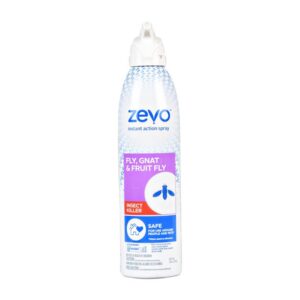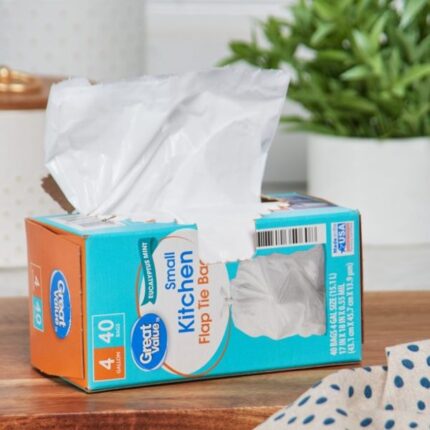Product details
When unwanted insects threaten your garden fun, turn to simple control you can trust. Sevin® Insect Killer Ready to Spray kills more than 500 insect pests by contact on ornamentals, flowers, vegetables and fruits, as well as in lawns and around your home’s perimeter. Connect a garden hose to the ready-to-spray concentrate’s container for automatic measuring and mixing, minus the mess. Then relax while it keeps protecting for up to three months,+ so you can enjoy your garden at its best. Use at the first sign of insect pests or where they are expected to appear. Shake well, with the control knob in the “Off” position. Attach a regular garden hose, and then turn on water to the hose. Take aim at target pests, plants or treatment areas, and turn the control knob to “On.” Spray evenly and as directed for the type of treatment area. Spray plant surfaces, upper and lower, until thoroughly wet. Read the product label for listed pests, and follow application instructions thoroughly.
+Except Ticks
- Kills over 500 listed pests
- Protects over 250 fruits and vegetables
- For use on home fruit & vegetable gardens
- Ready-to-spray formulation, just hook to your hose.
- Non-staining formulation.
- 32 oz.
Specifications
Brand
Sevin
Manufacturer Part Number
100525781
Manufacturer
Central Garden and Pet
Assembled Product Weight
2.57 lb
Assembled Product Dimensions (L x W x H)
5.50 x 2.50 x 11.25 Inches
Directions
Instructions
Where to Use: Fruit and vegetable gardens, ornamental plants and shrubs, flowers and ground covers, around structures, lawns. How Much to Use: Mixes automatically as you spray. Treats 2,000 sq ft of lawn. Direction for Use: It is a violation of Federal law to use this product in a manner inconsistent with its labeling. Shake well before using. Use Restrictions: Do not treat pets with this product. Do not apply this product in a way that will contact adults, children, or pets, either directly or through drift. Do not allow adults, children, or pets to enter the treated area until sprays have dried. Remove pets, birds, and cover fish aquariums before spraying. Avoid contamination of food and feedstuffs. Remove or cover exposed food and drinking water before application. Do not use in food handling establishments in which food is held, processed, prepared, and/or served. When used in the home, remove or cover dishes, utensils, food processing equipment, and food preparation surfaces or wash them before use. Do not apply directly to animals. Do not use in aircraft. For Outdoor Uses: All outdoor applications must be limited to spot or crack-and-crevice treatments only, except for the following permitted uses: (1) Treatment to soil or vegetation around structures; (2) Applications to lawns, turf, and other vegetation; (3) Applications to building foundations, up to a maximum height of 3 feet. Other than applications to building foundations, all outdoor applications to impervious surfaces such as sidewalks, driveways, patios, porches and structural surfaces (such as windows, doors, and eaves) are limited to spot and crack-and-crevice applications, only. Do not water the treated area to the point of run-off. Do not make applications during rain. Application is prohibited directly into sewers or drains, or to any area like a gutter where drainage to sewers. Storm drains, water bodies, or aquatic habitat can occur. Do not allow this product to enter any drain during or after application. Specific use Directions: Sevin Insect Killer Ready to Spray applied through the ready-to-spray hose-end sprayer delivers a solution containing 0.011% zeta-cypermethrin. For all applications, this product provides control of each pest as listed in the Pest Table (see page 5). How to Use the Ready to Spray: Shake Well; Make sure control lever is in the off position. Attach to hose; Turn on water. Extend hose to furthest place in lawn or garden, so you can work backwards and limit exposure to spray; Spray; Aim towards direction of application and away from you; Turn control lever to on to begin spraying; Spray evenly and as directed for specified type of treatment area; When finished turn control lever to off; Turn faucet off. Discharge residual water pressure by turning control lever on and off again; Disconnect Sprayer and Store/Discard as instructed. Application Instructions: Apply where insects are expected to appear or when insects or damage are seen. Repeat as necessary according to site-specific directions listed below; Apply in calm weather; Begin spraying at the farthest point of the treatment area and work backward to avoid contact with wet treated surfaces; Spray thoroughly to wet plant surfaces up to the point of runoff; Sprays must be dry in treated areas before people or pets re-enter; Do not apply to trees taller than 10 feet. Consider hiring a licensed professional. Garden Vegetables: In the table below, the Pre-Harvest Interval (PHI) refers to the minimum number of days that must pass between the date of the last application and the date of harvest. Reapply it insects return, but not more than once every seven days and according to pre-harvest interval. Vegetables: Brassica Vegetables: Broccoli, Chinese Broccoli (gai Ion, white flowering broccoli), Brussels Sprouts, Cauliflower, Cavalo Broccolo, Kohlrabi, Cabbage, Chinese Cabbage (napa), Chinese Mustard Cabbage (gai choy), Broccoli Raab (rapini), Chinese Cabbage (bok choy), Collards, Kale, Mizuna, Mustard Greens, Mustard Spinach, Rape Greens, Turnip Greens. PHI: 1 Day. Vegetables: Corn (sweet). PHI: 3 Days. Vegetables: Cucurbit Vegetables: Chayote (fruit), Chinese Waxgourd (Chinese Preserving Melon), Citron Melon, Cucumber, Gherkin, Gourd (edible) (including hyotan, cucuzza. Hechima, Chinese orkra), Mormordica spp. (Includes balsam apple, balsam pear, bitter melon, Chinese cucumber), Muskmelon (includes true cantaloupe, cantaloupe, casaba, crenshaw melon, golden pershaw melon, honeydew melon, honey balls, mango melon, Persian melon, pineapple melon, Santa Claus melon, and snake melon), Pumpkin, Summer Squash (includes crookneck squash, scallop squash, straightneck squash. Vegetable marrow, zucchini), Winter Squash (includes butternut squash, calabaza, hubbard squash, acorn squash, and spaghetti squash), Watermelon (includes hybrids and varieties). PHI: 1 Day. Vegetables: Legume Vegetables – Succulent Edible-Podded Peas, Succulent Shelled Peas and Dried Shelled Peas: Dwarf Pea, Edible-pod Pea, Snow Pea, Sugar Snap Pea, Pigeon Pea, English Pea, Garden Pea, Green Pea, Lentil. PHI: 1 Day (succulent) 21 days (dried). Vegetables: Legume Vegetables – Succulent Edible-Podded Beans, Succulent Shelled Beans, and Dried Shelled Beans: Runner Bean, Snap Bean, Wax Bean, Asparagus Bean, Chinese Longbean, Moth Bean, Yardlong Bean, Jackbean, Soybean (immature seed), Swordbean, Lima Bean, Broad Bean (Fava Bean), Black-eyed Pea, Southern Pea, Grain Lupin. Sweet Lupin, White Lupin, White Sweet Lupin, Field Bean. Kidney Bean, Navy Bean. Pinto Bean, Tepary Bean, Adzuki Bean, Catjang, Cowpea, Crowder Pea, Moth Bean, Mung Bean, Rice Bean, Urd Bean, Chickpea (Garbanzo Bean), Guar, Lablab Bean. PHI: 1 Day (succulent) 21 days (dried). Vegetables: Fruiting Vegetables: Eggplant. Groundcherry (Physalis spp.), Okra, Pepino (Melon pear), Pepper (includes bell pepper, chili pepper, cooking pepper, pimento, sweet pepper), Tomatillo, Tomato. PHI: 1 day. vegetables: leafy vegetables: amaranth (leafy amaranth, chinese spinach, tampala); Arugula (roquette), cardoon, celery, Chinese celery, celtuce, chervil, chrysanthemum (edible-leaved and garland), cilantro (not for use on cilantro grown for seed or coriander), corn salad, cress (garden, upland (yellow rocket, winter cress)), dandelion, dock (sorrel), endive (escarole), fennel/Florence (finochio), garden cress, lettuce (head and leaf), orach, parsley, purslane (garden), purslane (winter), radicchio (red chicory), rhubarb, spinach (including New Zealand and vine, Malabar spinach, Indian spinach), Swiss chard. PHI: 1 Day. Vegetables: Peanuts. PHI: 7 Days. Vegetables: Root and Tuber Vegetables (except sugar beets): Arracacha, arrowroot, artichoke (Chinese and Jerusalem), garden beet, edible burdock, edible canna, carrot, cassava (bitter and sweet), celeriac (celery root), chayote (root), turnip-rooted chervil, chicory, chufa, dasheen (taro), ginger, ginseng, horseradish, leren, turnip-rooted parsley, parsnip, potato, oriental radish (daikon), radish, rutabaga, salsify (oyster plant), black salsify, Spanish salsify, skirret, sweet potato, tanier (cocoyam), turmeric, turnip, yam bean, yam (true). PHI: 1 Daay. Vegetables: Sunflowers: Castor oil plant, Chinese tallowtree, euphorbia, evening primrose, jojoba, Niger seed, rose hip, stokes aster, tallowwood, tea oil plant, and vemonia. PHI: 30 Days. Berries, Fruits, and Nuts: Use Sevin Insect Killer Ready to Spray as a spot treatment for pest infestations on the berries, fruits and nuts listed below. Applications to trees over 10 feet or trees with areas inaccessible to sprays are not recommended. Apply spray mixture to upper and lower leaves, around fruit clusters, and on branches and trunks up to the point of runoff. Reapply if insects return, but not more than once every seven days and according to pre-harvest interval. Berries, Fruits, and Nuts: Berries Crop Group including: Blackberry, loganberry, red and black raspberry, blueberry, highbush and lowbush, currant, elderberry, gooseberry, huckleberry, cultivars and/or hybrids of these. PHI: 1 Day. Berries, Fruits, and Nuts: Grapes. PHI: 1 Day. Berries, Fruits, and Nuts: Pome Fruit Group including: Apple, crabapple, loquat, mayhaw, pear, oriental pear, and quince. PHI: 14 Days. Berries, Fruits, and Nuts: Stone Fruit Group including: Apricot, cherry (sweet and tart), nectarine, peach, plum (including chickasaw plum, damson plum, and Japanese plum), plumcot, prune (fresh). PHI: 14 Days. Berries, Fruits, and Nuts: Tree Nuts Group including: Almond, beech nut, Brazil nut, butternut, cashew, chestnut, chinquapin, filbert (hazelnut), hickory nut, macadamia nut, pecan, pistachio, walnut (black and english). PHI: 7 Days. Berries, Fruits, and Nuts: Tropical Fruits including: Avocado, black sapote, canistel, mamey sapote, mango, papaya, sapodilla, star apple. PHI: 1 Day. Ornamental Trees, Shrubs, Flowers, and Ground Covers: Use Sevin Insect Killer Ready to Spray as a spot treatment for pest infestations on ornamental trees, shrubs, flowers and ground covers. Spray up to the point of run-off making sure to cover all sides of leaves and trunk. For ground covers, bedding plants, foliage, annuals and perennials, apply as a uniform spray. Reapply if pests return, but repeat applications should be limited to no more than once per seven days. Certain plants such as annuals may be sensitive to the final spray solution. A limited area should be treated and observed for one week prior to application to the entire planting. Outdoor Perimeter Treatments: Apply to the point of run-off as a residual spray to vegetation such as bushes and trees around buildings and other structures. For ants, apply to any trails, around doors and windows and other places where ants may be found. To prevent pests from entering buildings, apply to a band of soil and vegetation 5 to 10 feet wide around and adjacent to the building. Also treat the building foundation to a height of 2 to 3 feet where pests are active and may find entrance. The surface to be treated should be dry at the time of application. Lawns: Uniformly apply the product per 2,000 sq ft area. For best results, apply after mowing (lawn should not be longer than 3 inches at the time of application). Repeat applications are necessary only if there are signs of renewed insect activity. Pests Controlled: Caterpillars, Butterflies and Moths: Tent forming caterpillars, cocoon forming caterpillars, chrysalis forming caterpillars. Leaf feeding caterpillars (including leaves of flowering plants, bushes and other ornamentals, vegetables and trees), azalea leafminers, green cloverworm, fruit eating caterpillars, legume feeding caterpillars, vegetable feeding caterpillars, stem and trunk boring caterpillars, and leafrolling caterpillars. Caterpillars of the yucca moth family such as fairy moths and yucca moths; Clothes moth family; bagworm moth family, gelechiid moth family such as potato tuber moths; Ermine moth family such as ailanthus webworm moth; Clear winged moth family such as manroot borer, squash vine borer, doll’s clearwing moth, California sycamore borer: Tortricid moth family (millers) such as fruit tree leafroller moth, orange tortrix, and codling moth; skippers such as least skipper, silver-spotted skipper, and long-tail skipper; Swallowtails such as green swallowtail, zebra swallowtail, giant swallowtail (orange tail, orange puppy), pale swallowtail, eastern tiger swallowtail, eastern black swallowtail, spicebush swallowtail, and phoebus; Whites, sulphurs and orange tips family such as sara orange tip, great southem white, and European cabbage butterfly; Gossamer-winged butterflies family such as great purple hairstreak, spring azure, early hairstreak, eastern tailed blue, harvester, silvery blue, brown elfin, marine blue, American copper, and gray hairstreak: metalmark family such as Northern metalmark; Snout butterflies family such as common snout butterfly; Brush-footed butterfly family such as gulf fritillary, white peacock, harris checkerspot, painted lady (thistle butterfly), American painted lady (painted beauty), baltimore, zebra (yellow-barred heliconian), viceroy, white admiral (banded purple), mourning cloak, milbert’s tortoise shell, pearl crescent, question mark, buckeye, great spangled fritillary, and red admiral: Hackberry and goatweed butterfly family such as hackberry butterfly; Satyrs, nymphs and arctics family such as wood nymph (American grayling), white wood satyr, eyed brown (grass nymph), pearly eye, and chryxus arctic; Milkweed butterfly family such as queen, and monarch; Smoky moth family such as grape leaf skeletonizer; Slug caterpillar moth family such as saddleback caterpillar moth; Pyralid moths family such as mediterranean flour moth sod webworm moth, Indian meal moth, meal moth; Plume moth family such as artichoke plume moth; Measuringworm moth family such as tulip tree beauty, california cankerworm moth, and large California spanworm moth; Tent caterpillar moth family such as western tent caterpillar moth; Giant silkworm moth family such as luna moth, polyphemus moth, lo moth, promethea moth (spicebush silkmoth), regal moth (royal walnut moth), rosy maple moth, imperial moth, sheep moth, cecropia moth, and cynthia moth; Sphinx moth family such as virginia-creeper sphinx, pandora sphinx, hummingbird moth (common clearwing), white-lined sphinx, tomato hornworm moth, tobacco hornworm moth, big poplar sphinx, cerisy’s sphinx, and wild-cherry sphinx; Prominents family such as tentacled prominenets (puss moths), and red-humped appleworm moth; Tiger moth family such as ornate tiger moth, yellow woolly bear moth, acraea moth, milkweed tiger moth, spotted tiger moth, colona, woolly bear caterpillar moth (banded woolly bear), lichen moth, and rattlebox moth; Ctenuchid moth family such as virginia ctenuchid moth; Tussok moth family such as gypsy moth, white-marked tussok moth; Owlet moth family such as eight-spotted forester, black witch, alfalfa looper, sweetheart underwing, locust underwing, and hebrew. Common Bristletails: Sliverfish family such as silverfish, and firebrat. Springtails: Podurid springtail family such as snow pea, seashore springtail; Entomobryid springtail family such as ainsley???s springtail; Globular springtail family. Cockroaches: Blattid cockroach family such as oriental cockroach (Asiatic cockroach, shad cockroach), and American cockroach (waterbug); Blattellid cockroaches family such as German cockroach (Croton bug). Termites: Rotting-wood termite family such as pacific coast termite; subterranean termite family such as subterranean termites. Not intended to replace structural treatments. For termites – not recommended as sole protection against termites. Such applications are not a substitute for mechanical alterations, soil or foundation treatment but merely as a supplement. For active infestations, get a professional inspection. Earwigs: long-horned earwig family such as ring-legged earwig, and riparian earwig; Common earwig family such as European earwig. Grasshoppers & Crickets: Pygmy grasshopper family such as Aztec pygmy grasshopper; Short-horned grasshopper family such as creosote bush grasshopper, lubber grasshopper, painted grasshopper, Carolina locust, dragon lubber grasshopper (gray dragon), three-banded grasshopper (banded range grasshopper), differential grasshopper, red-legged locust, spur-throated grasshopper,-two-stripped grasshopper, panther-spotted grasshopper, southeastern lubber grasshopper, alutacea bird grasshopper, American bird grasshopper, green valley grasshopper, toothpick grasshopper, horse lubber grasshopper, pallid-winged grasshopper, and great crested grasshopper (dinosaur grasshopper); Long-horned grasshoppers and katydids family such as oblong-winged katydid, mormon cricket, short-legged shield back katydid, California katydid, angular-winged katydid, keeled shield-back katydid, nebraska cone-head, gladiator katydid, mescalero shield-back katydid, true katydid (northern katydid), and fork-tailed bush katydid; Camel crickets family such as spotted camel cricket, secret cove cricket, Jerusalem cricket; True crickets family such as house cricket (cricket on the hearth), field cricket, California tree cricket, snowy tree cricket, and black-homed tree cricket; Mole cricket family such as northern mole cricket and European mole cricket. True Bugs: Plant bug family such as adelphocoris plant bugs, scarlet plant bugs, tarnished plant bugs. and four-lined plant bug; Assassin bug family such as bee assassins, wheel bug; Ambush bug family such as jagged ambush bug; Lace bug family such as oak lace bug; seed bug family such as small eastern milkweed bug; Long-necked seed bug, and large milkweed bug; Stilt bug family such as stilt bugs; Leaf-footed bug family such as florida leaf-footed bug, and squash bug; Scentless plant bug family such as eastern boxelder bug and western boxelder bug; Stink bug family such as green stink bug, brochymenas, two-spotted stink bug (conspicuous stink bug), harlequin cabbage bug (calico bug, fire bug), and spined soldier bug. Cicadas and kin: Cicada family such as periodical cicadas, dogday harvestfly, and grand western cicada. Pests controlled: Treehoppers: Treehopper family, such as Thorn-mimic treehopper, oak treehopper, buffalo treehopper, and locust treehopper. Leafhoppers: Leafhopper family such as grape leafhopper, scarlet-and-green leafhopper, sharpshooter. Thrips: Banded thrips family such as banded-wing thrips; Common thrips family. Beetles: Tiger beetle family such as beautiful tiger beetle, dainty tiger beetle, six-spotted green tiger beetle, and dejean’s flightless tiger beetle; ground beetle family such as bombardier beetle, fiery searcher (caterpillar hunter), European ground beetle, green pubescent ground beetle, common black ground beetle, and boat-backed ground beetle; Predacious diving beetle family such as small flat diving beetle, large diving beetle, and marbled diving beetle; whirligig beetle family such as large whirligig beetle, and small whirligig beetle; Hister beetle family such as hister beetles; Rove beetle family such as gold-and-brown rove beetle and pictured rove beetle; Carrion beetle family such as margined burying beetle, tomentose burying beetle (gold-necked carrion beetle), American carrion beetle, and northern carrion beetle; Stag beetle family such as elephant stag beetle. Agassiz’s flat-horned stag beetle, reddish-brown stag beetle, and rugose stag beetle; Bessbugs family such as patent-leather beetle (homed passalus); Scarab beetle family such as tumblebugs, goldsmith beetle, green jumping beetle, brown fruit chafer, glossy pillbug, grapevine beetle, may beetles (June beetles), ten-lined June beetles, and Japanese beetle; Metallic wood-boring beetles such as golden buprestid, western pine borer (sculptured pine borer), and divergent metallic wood borer (flatheaded cherry tree borer); Click beetle family such as eastern eyed click beetle (big-eyed click beetle), and fire beetles; Fireflies (lightning bugs) family such as pyralis firefly, and Pennsylvania firefly; Soldier beetle family such as Pennsylvania leather-wing, and downy leather-wing, net-winged beetle family such as banded net-wing, and golden net-wing; Spider beetle family such as spider beetles, and Texan spider beetle; Branch and twig borer family such as apple twig borer; Checkered beetle family such as California checkered beetle, elegant checkered beetle, slender checkered beetle, and red-blue checkered beetle; Flat bark beetle family such as red flat bark beetle; Pleasing fungus beetle such as rough fungus beetle; ladybug beetles such as two-spotted ladybug beetle, nine-spotted ladybug beetle, spotless nine-spotted ladybug, convergent ladybug beetle, and ash gray ladybug beetle; Darkling beetles such as horned fungus beetle, broad-necked darkling beetle, plicate beetle, yellow mealworm beetle, and ironclad beetle; Fire-colored beetles family such as fire beetles; Blister beetles family such as striped blister beetle, Arizona blister beetle, short-winged blister beetle (oil beetle); Long-horned beetle family such as black-horned pine borer, yellow douglass fir borer, long-jawed longhorn, elder borer (cloaked knotty-horn), twig pruners, pine sawyer (spined-neck longhorn), golden-haired flower longhorn, locust borer, black pine sawyer (white spotted sawyer), cylindrical hardwood borer, cottonwood twig borer, cottonwood borer, giant root borers, ribbed pine borer, California laurel borer (banded alder borer), ivory marked beetle, red milkweed beetle (eastern milkweed longhorn), notch-tipped flower longhorn, and willow borer; Seed borer family such as bean weevil; Leaf beetle family such as dogwood calligrapha, milkweed tortoise beetle (Argus tortoise beetle), dogbane leaf beetle, milkweed leaf beetle, willow leaf beetle, spotted asparagus beetle, clavate tortoise beetle, spotted cucumber beetle, waterlily leaf beetle, swamp milkweed leaf beetle, three-lined potato beetle (old-fashioned potato bug), Colorado potato beetle, and girdled leaf beetle; Primitive weevil family such as oak timberworm beetle (primitive weevil); Snout beetles and weevil family such as boll weevil, black oak acorn weevil, lesser cloverleaf weevil, alfalfa weevil, pine weevils, rose weevils, Agrave billbug, and stored-grain billbug (granary weevil, elephant bug); Bark and ambrosia beetle family such as red turpentine beetle, pine and spruce engraver beetles, and bark beetles. Bees, Ants, Wasps, Sawflies: Cimbicid sawflies family such as rusty willow sawfly; Common sawfly family such as northeastern sawfly; Horntail family such as pigeon horntail, and smokey horntails; Stem sawflies family such as raspberry horntail; Braconids family such as braconid wasps; Ichneumons family such as giant ichneumons, short-tailed ichneumons and red-tailed ichneumon; Torymid wasp family such as California torymus; Chalcid family such as golden-yellow chalcid; Gall wasp family such as California oak gall wasps and live oak gall wasp: Pelecinid family such as American pelicini; Tiphiid wasp family such as five-banded tiphiid wasp; Velvet-ants such as thistledown velvet-ant, red velvet-ant, and cow killer; Scoliid wasp family such as scarab-hunter wasp, and digger wasp; Ant family such as spine-waisted ants, leafcutter ants, Texas carpenter ants, black carpenter ants, crater-nest ants, crazy ants, tawny crazy ants, Texas shed-builder ant (acrobat ant), red ant, legionary ant, little black ant, arid lands honey ant, big-headed ant, honey ant, and fire ant; Vespid wasp family such as potter wasp, paper wasps, yellow jackets, and sandhills hornet; Spider wasps such as blue-black spider wasps, and tarantula hawk; Sphecid wasp family such as thread-waisted wasps, eastern sand wasp, steel-blue cricket hunter, purplish-blue cricket hunter, Florida hunting wasp. Black and yellow mud dauber, cicada killer, and great golden digger wasp; Bee families such as plasterer bee, yellow-faced bees, virescent green metallic bees. Augochlora green metallic bees, alkali bee, mining bee, willow mining bee, Nevada mining bee, clarkia bee, faithful leafcutting bee, western leafcutting bee, mason bees, California leafcutting bee, digger bees, western cuckoo bee, California carpenter bee. Flies: Crane fly family such as wood-boring tupulid, giant western crane fly, and crane flies; Phantom crane flies such as phantom crane fly; Net-winged midges such as Comstock’s net-winged midge; Phantom midges; Black flies such as black flies; March flies family such as march flies; Fungus gnats family such as fungus gnats; Snipe fly family such as gold-backed snipe fly; Stiletto fly family such as stiletto flies; Flower-loving fly family such as flower-loving fly; Mydas fly family such as mydas fly; robber fly family such as bearded robber fly, sacken’s bee hunter, giant robber fly, bee killer (giant robber fly), and robber flies; Bee flies such as bee fly, large bee flies, and progressive bee flies; Dance flies such as dance flies; Long-legged flies such as condylostylid long-legged flies, and Texan long-legged fly; Hover fly family such as woollty bear hover flies, elongate aphid flies, drone flies, bulb flies, American hover flies, and toxomerus hover fly; Thick headed fly family such as thick headed fly; pyrgotid fly family such as pyrgotid flies; Fruit fly family such as walnut husk fly, and apple maggot fly; Seaweed fly family such as California seaweed fly; Marsh fly family such as marsh flies; Shore fly family such as yellowstone brine fly; Pomace fly family such as vinegar fly; Anthomyiid fly family such as dung fly; Muscid fly family such as house fly, and biting stable fly; Louse fly family, blow fly family such as blue bottle fly, screw-worm fly, and green bottle fly; Flesh fly family such as flesh flies; Tachinid fly family such as beelike tachinid fly, early tachinid fly, repetitive tachinid fly, tachina fly, and fringe-legged tachinid fly. Spiders: Folding trapdoor spider family such as turret spider; Tarantula family such as desert tarantula; Trapdoor spider family such as California trapdoor spider; Dictynid spider family such as branch-yip spiders; Spitting spider family such as spitting spiders; Violin spider family such as desert loxosceles, and violin spider; Comb-footed spider family such as American house spider, and black widow spider, sheet-web weaver family such as hammock spider; Orb weaver family such as orb weavers, barn spider, garden spider (cross spider), marbled orb weaver, shamrock spider, six-spotted orb-weaver, silver argiope, black-and-yellow argiope, crablike spiny orb weaver, bola spider, arrow-shaped micrathena, and golden-silk spider (calico spider); Large-jawed orb weaver family such as mabel orchard spider, venusta orchard spider, elongate long-jawed orb weaver, and long-jawed orb weaver; Funnel web weaver family such as grass spiders; Nursery web spider family such as brownish-grey fishing spider, six-spotted fishing spider, and nursery web spider; Wolf spider family such as burrowing wolf spiders, Carolina wolf spider, forest wolf spider, rabid wolf spider, and thin-legged wolf spider; Lynx spider family such as jumping lynx spider, and green lynx spider, sac spider family such as ant-mimic spiders; Wandering spider family such as wandering spiders; Giant crab spider family such as huntsman spider, and golden huntsman spider; Selenopid crab spider family such as selenopid crab spider; Crab spider family such as goldenrod spider (flower spider, red-spotted crab spider), elegant crab spider, thrice-banded crab spider; Philodromid family such as inconspicuous crab spiders; Jumping spiders such as green lyssomanes, dimorphic jumping spider, metaphid jumping spider, ant-mimic jumping spider, and daring jumping spider. Daddy-long-legs family such as eastern daddy-long-legs and brown daddy-long-legs. Ticks: Blacklegged tick, brown dog tick, deer tick. Psyllid, Whiteflies, Aphids, Mealybugs, Scale Insects: Psyllid family such as American alder psyllid; Whitefly family such as greenhouse whitefly; Aphid family such as green apple aphid, rosy apple aphid, rose, pea and potato aphid, root aphid, coudy-winged cottonwood aphid, and giant willow aphid; Woolly and gall-making aphid family such as woolly apple aphid; Giant scale insects family such as cottony cushion scale; Armored scale insects family such as oyster shell scale; Mealybug family such as long-tailed mealybug; Cochineal bug family such as cochineal bug. Millipedes: Millipedes such as soft millipedes, florida millipede, almond millipede, north American millipede and flat millipedes. Plants: Vegetables: Leafy Vegetables: Amaranth (leafy amaranth, Chinese spinach, tampala); Arugula; Cardoon; Cilantro; Corn Salad; Garden Cress; Upland Cress; Dandelion; Dock; Endive: Florence Fennel; Head Lettuce; Leaf Lettuce; Orach; Parsley; Garden Purslane; Winter Purslane; Radicchio (red chicory); Rhubarb; Spinach; Swiss Chard. Pests: Corn Earworm, Cucumber Beetles, Cutworms, Diamondback Moth, Flea Beetles, Imported Cabbageworm, Leafhoppers, Saltmarsh Caterpillar, Tobacco Budworm, Armyworms, Loopers, Lygus Bugs, Onion Thrips, Stink Bugs, Wireworm. Use before harvest: Spray up to 1 day before harvesting. Plants: Fruiting Vegetables including: Eggplant; Groundcherry (Physalis spp.); Pepino (Melon pear); Pepper (includes bell pepper, chili pepper, cooking pepper, pimento, sweet pepper); Tomatillo; Tomato. Pests: Armyworm, Southern Armyworm. True Armyworm, Yellow-striped Celery Leaf Tier, Colorado Potato Beetle, Corn Borer, European, Corn Borer, Southwestern Corn Earworm, Cucumber Beetle, Cutworm, Flea Beetle, Garden Webworm, Green Stink Bug, Homworms, Leafminers (adults). Leafhoppers, Meadow Spittlebug, Pepper Maggot (adults), Pepper Weevil. Plant Bugs, Tobacco Budworm, Tomato Fruitworm, Tomato Pinworm, Aphids, Armyworm, Beet Armyworm, Fall Cabbage Looper, Grasshoppers, Lygus Bugs, Brown Stink Bug, Tomato Psyllid, Thrips, Whiteflies. Use before harvest: Spray up to 1 day before harvesting. Plants: Brassica Vegetables including: Broccoli; Chinese Broccoli (gai Ion, white flowering broccoli); Brussels Sprouts; Cauliflower; Cavalo Broccolo; Kohlrabi; Cabbage; Chinese Cabbage (Napa); Leafy Brassica Greens including: Broccoli Raab (rapini); Chinese Cabbage (bok choy); Chinese Mustard Cabbage (gai choy); Collards; Kale; Mizuna; Mustard Greens; Mustard Spinach; Rape Greens. Pests: Corn Earworm, Cucumber Beetles, Cutworm, Diamondback Moth. Flea Beetles, Imported Cabbageworm, Leafhoppers, Saltmarsh Caterpillar, Southern Cabbageworm, Tobacco Budworm, Alfalfa Looper, Armyworms, Cabbage Looper, Cabbage Webworm, Ground Beetles, Leafminers (adults), Lygus Bugs, Onion Thrips, Stinkbugs, Wireworm (adults), Aphids, and Whiteflies. Use before harvest: Spray up to 1 day before harvesting. Plants: Vegetables-continued: Root & Tuber Vegetables: Arracacha; Arrowroot; Artichole; Garden Beet; Edible Burdock; Edible Canna; Carrot; Turnip-rooted chervil; Chicory; Chufa; Dasheen (Taro); Ginger; Ginseng; Horseradish; Leren; Turnip-Rooted Parsley; Parsnip; Potato; Oriental Radish (Daikon); Rutabaga; Salsify (Oyster plant); Black Salsify; Spanish Salsify; Skirret; Sweet Potato; Tanier (Cocoyam); Turmeric: Turnip; Yam Bean; Yam (True). Pests: Cutworms, cabbage looper cucumber beetle, European corn borer, flea beetles, leafhoppers, southern corn rootworm (adult), vegetable weevil, white fringed beetle (adult), armyworm, beet armyworm, yellowstriped cabbage maggot, colorado potato beetle, grasshoppers, imported cabbageworm, potato leafhopper, potato psyllid, potato tuberworm, tarnished plant bug. Use before harvest: Spray up to 1 day before harvesting. Plants: Cucurbit vegetables group including but not limited to: Chayote(fruit); Chinese waxgourd (chinese preserving melon); Citron melon; cucumber; Gherkin; Gourd (edible) (including hyotan, cucuzza, hechima, chinese orkra); Mormordica spp. (includes balsam apple, balsam pear, bitter melon, chinese cucumber); Muskmelon (hybrids and/or cultivars of cucumis melo) (includes true cantaloupe. Cantaloupe, casaba, crenshaw melon, golden pershaw melon, honeydew melon, honey balls, mango melon, pineapple melon, Santa Claus melon, and snake melon); Pumpkin; Summer squash (includes crookneck squash, scallop squash, straightneck squash, vegetable marrow, zucchini); Winter squash (includes butternut squash, calabaza, hubbard squash, acorn squash, and spaghetti squash); Watermelon (includes hybrids and varieties). Pests: Cutworms, cabbage looper, cucumber beetles. (adult), leafhoppers, melonworm, pickleworm, rindworm, squash bug, squash vine borer, corn earworm, plant bugs, stinkbugs. Use before harvest: Spray up to 1 day before harvesting. Plants: Bulb Vegetables (Allium spp.) including: Garlic; Garlic, great-headed (elephant); Green eschalots; Japanese bunching onions; Leeks; Onion, dry bulb and green; Onion, welch; Shallots, dry Blub and green; spring onion or scallions. Pests: Armyworms, cutworms, leafminers (adults), onion maggot adults, stink bugs, aphids, onion thrips. Use before harvest: Spray up to 7 days before harvesting. Plants: Vegetables-continued: Sunflower. Pests: Cutworm spp., White grub, wireworm. Use before harvest: Spray up to 30 days before harvesting. Plants: Sweet Corn. Pests: Chinch Bug, corn rootworm (adult), corn silkfly, cutworms, flea beetle, leafhoppers, japanese beetle (adult), sap beetle (adults), tarnished plant bug, armyworms, corn borers, corn earworm, grasshoppers, aphids. Use before harvest: Spray up to 3 days before harvesting. Plants: Legume vegetables-succulent and dried. Succulent edible-podded peas, succulent shelled peas and dried shelled peas (pisum spp.) including: Dwarf pea; Edible-pod pea; Snow Pea; Pigeon pea; English pea; Garden Pea; Green pea; Lentil. Succulent Edible-podded beans, succulent shelledbeans, and dried shelled beans, and dried shelled beans including: Runner bean; Snap Been; Wax bean; Asparagus bean; Chinese longbean; Moth bean; Yardlong bean; Jackbean; Soybean (immature seed); Swordbean; Lima bean; Broad bean (favabean); Black-eyed pea; Southern pea; grain lupin; Sweet lupin; white lupin; White sweet lupin; Field bean; Kidney bean; Pinto bean; Adzuki bean; Catjang; Cowpea; Crowder pea; Moth bean; Rice bean; Chickpea (Garbanzo bean); Guar; Lablab Bean. Pests: Cutworms, painted lady (thistle) caterpillar, saltmarsh caterpillar, silverspotted skipp, alfalfa caterpillar, armyworm, southern armyworm, true armyworm, yellow-striped bean leaf beetle, blister beetles, colorado potato beetle, European corn borer, corn borer, southwestern corn earworm, corn rootworm beetle (adult), cowpea curculio, cucumber beetle, flea beetle, green cloverworm, ground beetles, imported cabbageworm, japanese beetle, leaf skeletonizers, leafhoppers, leafminers (adults), mexican bean beetle, pea weevil, pea leaf weevil, plant bugs, potato leafhopper, seedcorn beetle, seedcorn maggot alfalfa, hopper, tobacco budworm, velvetbean caterpillar, webworms, woolly bear caterpillar. Use before harvest: Spray up to 1 day before harvesting on succulent shelled or edible-pod-ded peas or beans, and up to 21 days before harvesting for dried shelled peas or beans. Plants: Fruits and nuts: Berries crop group including: Blackberry; Loganberry; Red and black raspberry; Blueberry; Highbush ad lowbush; Currant; Elderberry; Gooseberry; Huckleberry. Pests: Leafrollers, Orange tortrix, root weevils. Use before harvest: Spray up to 1 day before harvesting. Plants: Stone fruit trees: Apricot; Cherry (sweet and tart); Nectarine; Peach; Plum (including chickasaw plum, damson plum, and japanese plum); Plumcot; Prune. Pests: American plum borer, black cherry aphid, cherry fruit fly, green fruitworm, leafrollers, leafhoppers, lesser peach tree borer, peach tree borer, peach twig borer, plum curculio, oriental fruit moth, rose chafer, stink bugs, tarnished plant bug, tufted apple budmoth, western cherry fruit fly. Use before harvest: Spray up to 14 days before harvesting. Plants: Fruits and nuts-continued pome-fruit trees: Apple; Crabapple; Loquat; Mayhaw; pear; Oriental pear; Quince. Pests: Apple maggot, codling moth, European apple sawfly, green fruitworm, japanese beetle, lesser appleworm, oblique banded leafroller, oriental fruit moth, pandemis leafroller, pear psylla, plum curculio, potato leafhopper, redbanded leafroll, rosy apple aphid, spirea aphid, spotted tentiform leafminer, stink bugs, tarnished plant bug, tufted apple bud moth, variegated leafroller, white apple leafhopper. Use before harvest: Spray up to 14 days before harvesting. Plants: Grapes. Pests: Eastern grape leafhopper, variegated leafhopper, western grapes leafhopper. Use before harvest: Spray up to 1 day before harvesting. Plants: Peanuts. Pests: Cutworm spp., green cloverworm, velvetbean caterpillar, red-necked peanut worm, bean leaf beetle, leafhopper spp., southern corn rootworm (adult), vegetable weevil, whitefringed beetle (adult), aphid spp., armyworm, beet, fall armyworm, beet, fall armyworm, corn earworm, grasshopper spp., lesser cornstalk borer, soybean looper, stink bug spp., tobacco thrips. Use before harvest: Spray up to 7 days before harvesting. Plants: Nut trees: Almonds; Beech nut; brazil nut; Butternut; Cashew; Chestnut; Chinquapin; Filbert (hazelnut); Hickory nut; Pecan; Walnut (Black and English). Pests: Black Pecan Aphid, Codling Moth, Filbert Worm, Hickory Shuckworm, Leaffooted Bugs, Navel Orangeworm, Oblique-banded Leafroller, Peach Twig Borer, Pecan Leaf Casebearer, Pecan Nut Casebearer, Pecan Phylloxera, Pecan Weevil, Plant Bugs, Stink Bugs, Walnut Aphid, Walnut Husk Fly, Yellow Pecan Aphid. Use before harvest: Spray up to 7 days before harvesting. Do not apply more than 0.125 lb ai/A per season. Plants: Tropical Fruits: Avocado; Black Sapote; Canistel; Mamey Sapote; Mango; Papaya, Sapodilla Star apple. Avocado Lace Bug, Avocado Leafhopper, Avocado Leafroller, Avocado Loopers, Avocado Tree Girdler, Avocado Whitefiy, Brown Soft Scale, Caterpillars, Mirids, Omnivorous Loopers, Orange Tortrix, Scale Crawlers, Spanworm, Thrips, Twig Borers. Use before harvest: Spray up to 1 day before harvesting. Important – Directions for Storage and Disposal: Storage: Keep from freezing. Keep out of reach of children and animals. Store in original containers only. Store in a cool, dry place, preferably in a locked storage area and avoid excess heat. After partial use, replace lids and close tightly. Do not put concentrate or dilute material into drink containers. Pesticide Disposal and Container Handling: Nonrefillable container. Do not reuse or refill this container. If empty: Place in trash or offer for recycling, if available. If partly filled: Call your local solid waste agency for disposal instructions. Never place unused product down any indoor or outdoor drain. Shake well before using.
Ingredients
Ingredients
Active Ingredients: Zeta-Cypermethrin (This Product Contains 0.03 Pounds Active Ingredient per Gallon) (Cis/Trans Ratio: Max, 75% (+/-) Cis and Min, 25% (+/-) Trans) (0.35% by Wt). Other Ingredients: (99.65% by Wt). Total: (100.00% by Wt).




















Reviews
There are no reviews yet.